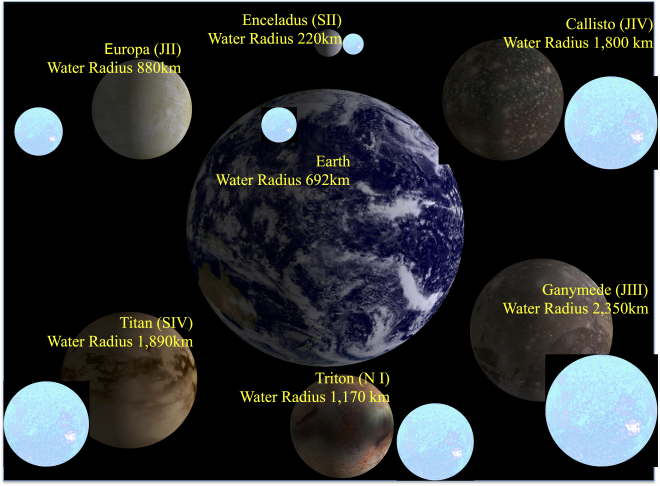「惑星水文学・惑星海洋学の確立に向けて」
地球は水惑星と呼ばれています。表面に液体の水が存在する惑星は太陽系の8つの惑星の中では地球だけです*。しかし太陽系のスノーライン外側に位置する巨大ガス惑星の衛星は大量の氷を有していること、その一部が潮汐力により液体の水となり、内部海が存在していることが明らかになってきました。その意味で、水の含有量でみると、地球は太陽系の中では取り立てて優位な水惑星であるとは言えなくなっている。しかしながら、適度な太陽放射(1367 W/m2)を受け、常に水循環・水文プロセスが行われている惑星は、やはり太陽系の中では地球だけと言えます。

それでは、太陽系外惑星の中で、地球のような水惑星の可能性のある惑星はどれくらいあるのでしょうか?当研究室が中心的になって開発したExoKyotoを用いた判定では、それぞれ、ハビタブル・ゾーン(ゴルディロックスゾーン)の
前述の潮汐力によって氷衛星が内部海を持つ条件まで含めると、Kopparapu et al.2013によると45個(地球-火星を加えると47個)
http://www.exoplanetkyoto.org/exohtml/A_Habitable_Kop.html
太陽系相当天文単位(SEAU)によると17個(地球-金星を加えると19個)
http://www.exoplanetkyoto.org/exohtml/A_Habitable_SEAU.html
となります。そのどれもが表面に液体の水を持つ可能性があると同時に、どれにも未だに表面の海は見つかっていないのです。
なぜなら、その中で最も近い惑星Proxima Cen bでも4.37光年、最も太陽系と地球に近いとされているKepler-452bは1400光年も離れているからです。移住先として考えても、火星にすらまだ人類が到達していない現在、その実現性はまだ構想すらできていない状況です**
このような状況の中で、地球の水資源を管理・評価し、かつ持続可能な状態で保全してゆくことは「ますます」重要になったと認識しなければなりません。地球の外に水惑星を求めれば求めるほど、かえって地球の大切さが理解できるのです。すると、限られた水資源を、どのように「地球生命にとって」あるいは「地球そのものにとって」望ましい形で残してゆくか?これが我々人類に課せられた大きな課題であり、それを守っていくのが我々の「使命」であると言えます。
地球惑星水資源評価研究室 は 地球水資源評価研究室 を 惑星の水資源を本格的に評価・検討する必要性から改名し、新たに出発しました。太陽系外惑星データベースExoKyotoの開発を通じて得られた知見や、地球の水資源評価で開発してきた技術を適用し、太陽系内・系外惑星を対象とした「惑星水文学」、そしてさらにその先の太陽系外に「液体の海」が確認される未来を見据えての「惑星海洋学」の確立を目指して日々研究に励んでおります。
*表面に液体がある惑星(衛星)はタイタンがあり、メタン(であろう)の湖が確認されています。
例えば
http://natgeo.nikkeibp.co.jp/atcl/news/17/011600013/?ST=m_news
**現在、最も近くのProxima Cen b に、撮影用のチップを飛ばし、近距離での直接撮像画像を得ようとするブレークスルー・スターショット計画が構想されています。
